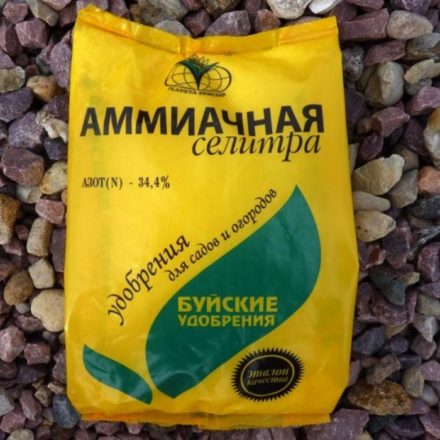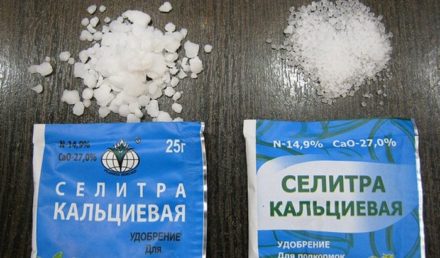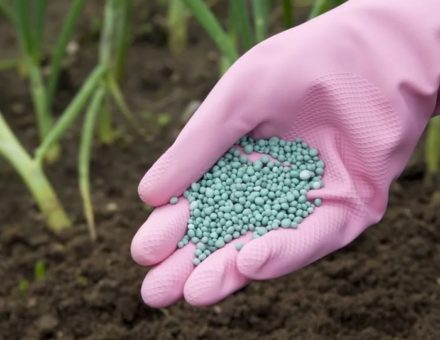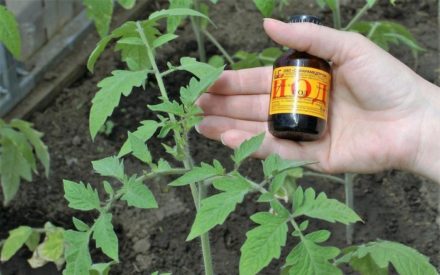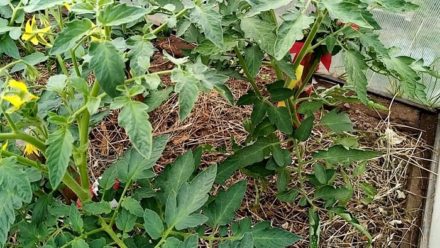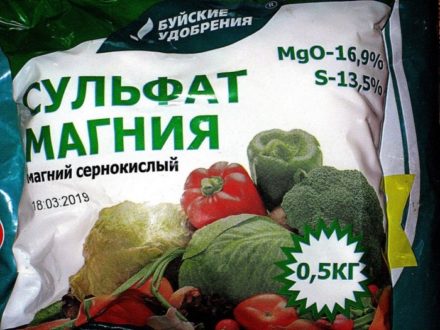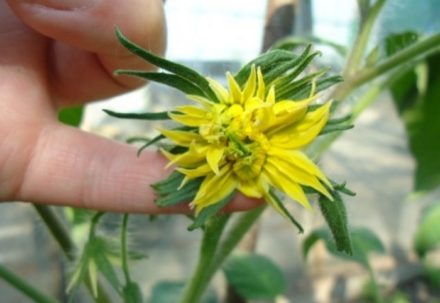Tomatoes need calcium in order to better absorb other elements. Calcium nitrate is used to feed crops in the first half of the season. The fertilizer contains 19% calcium and 13% nitrogen, suitable for any type of soil. Calcium nitrate does not acidify the soil, strengthens the immune system and root system of plants, improves metabolism and the process of photosynthesis. Due to the use of calcium nitrate, productivity increases by 15% if the fertilizer is applied correctly.
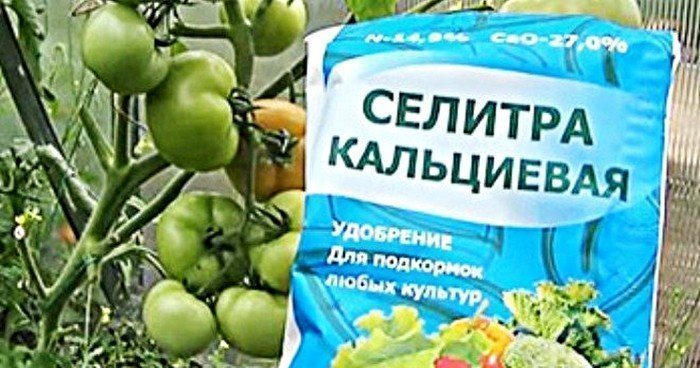
Deadlines for depositing
Calcium nitrate will bring the most benefit to tomatoes at the beginning of cultivation - in spring and summer. Fertilizer is placed in the hole during planting of seedlings in the ground, used for spraying before flowering and at the time of ovary formation.
The first root feeding should be done a week after the tomatoes are in the garden. A seven-day interval must be maintained so that the roots have time to take root in the soil and the plants adapt to new conditions. In the greenhouse, fertilizing is carried out 10 days after planting the seedlings by spraying. After 2 weeks, the procedure will need to be repeated.
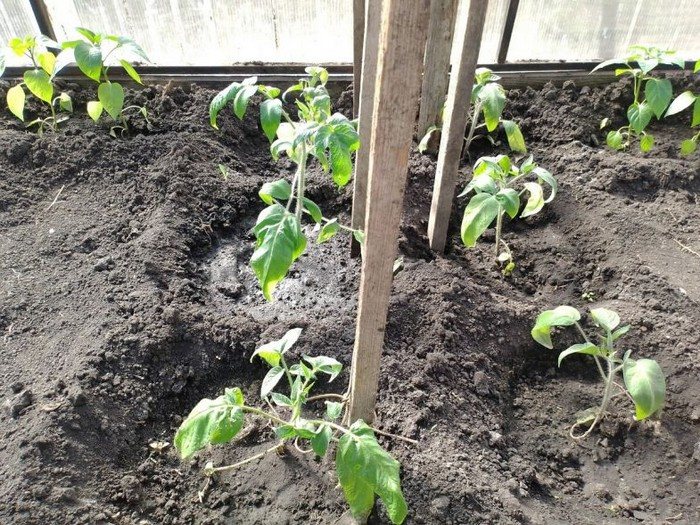
Adding fertilizer to the planting hole
Placing fertilizers in the hole will help the active growth of tomatoes after transplanting to a permanent place.Calcium nitrate is also added along with other mineral fertilizers, but it must be taken into account that calcium nitrate does not combine well with sulfur and phosphorus, so they are not used together.
Place 1 tsp in each well. calcium nitrate. Then the granules are mixed with soil and watered. A tomato bush is placed on top without disturbing the earthen coma. The planted seedlings are covered with fertile soil and watered abundantly.
The nitrogen contained in calcium nitrate will promote active growth of shoots and leaves. Calcium will have a supporting effect, protecting tomatoes from unfavorable external factors and the occurrence of diseases.
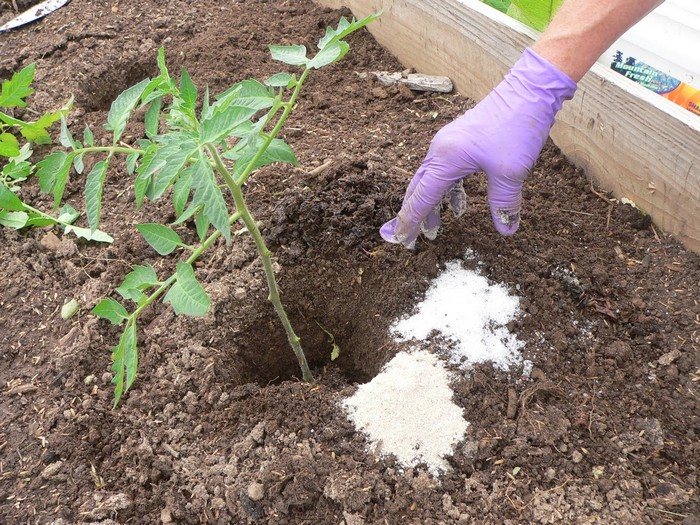
Foliar feeding
An overdose of calcium nitrate will contribute to the accumulation of nitrates in fruits, so the fertilizer must be applied strictly following the application rates. In addition, keep in mind that excess calcium nitrate can adversely affect the plant itself.
The spraying solution is prepared from 25 g of fertilizer per 1-1.5 liters of water. Foliar feeding is usually used as an emergency measure when leaves wither or the crop is affected by blossom end rot. After application, the solution is quickly absorbed, which accelerates the transport of beneficial substances to all plant tissues.

Application at the root
Root feeding of tomatoes with calcium nitrate is carried out using any growing method - in a greenhouse, open ground, on a windowsill. The solution is applied to the soil every 2 weeks, after dissolving 100 g of granules or crystals in 10-15 liters of water. Such fertilizing is carried out before the fruit begins to grow.
Before the formation of ovaries, you can make a nutritious cocktail from 0.5 liters of chicken manure and 20 g of calcium nitrate per bucket of water. When signs of nitrogen deficiency appear (for example, after fertilizer is washed out of sandy soil), unscheduled fertilizing with calcium nitrate is carried out.
Nitrogen starvation will be signaled by thinned leaf blades, pale leaf color, shedding of unopened buds, and weak formation of ovaries. It is advisable to alternate mineral fertilizer with the use of organic matter. An infusion of mullein, bird droppings, and green grass is used as a nitrogen supplement.
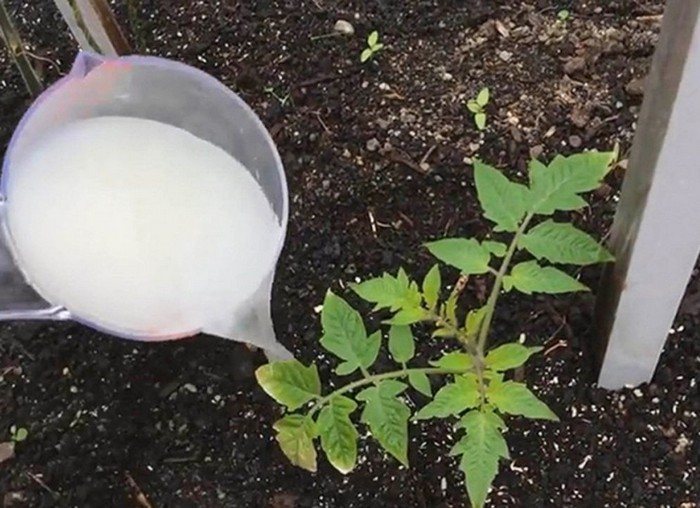
Acceptable combinations with other fertilizers
Since the proportion of nitrogen in calcium nitrate is relatively small, plants may initially lack nitrogen. If the tomatoes show signs of nitrogen starvation, the next fertilizing with calcium nitrate is combined with saltpeter or organic fertilizers rich in nitrogen (cow and horse manure, bird droppings, infusion of green grass).
At later stages (closer to flowering), plants need mainly phosphorus and potassium. In this case, ring nitrate is added to the infusion of wood ash. Joint fertilizing enhances the effect of each fertilizer, which means it is more effective.
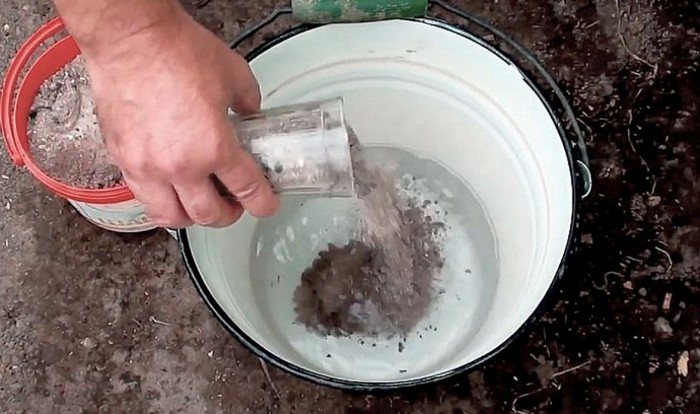
Calcium nitrate should not be excluded from the list of mineral fertilizers for feeding tomatoes. The crop responds to the application of calcium nitrate with good growth and fruit set. To ensure that the fertilizer brings only benefits, it is used before active fruiting begins, following the rules of application and dosage.


